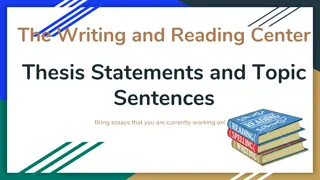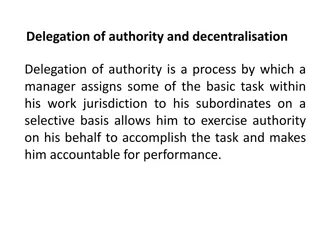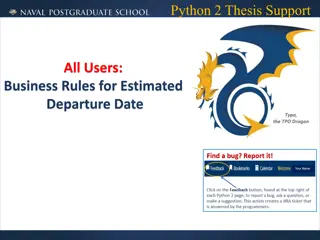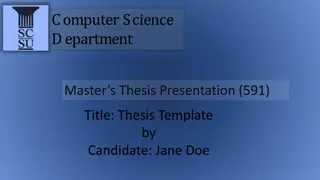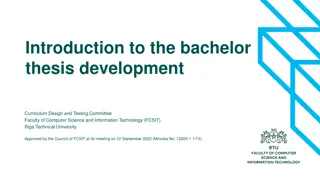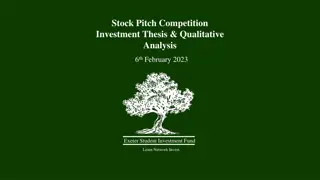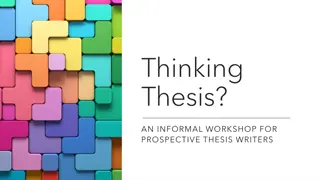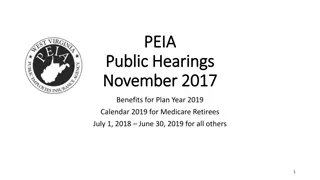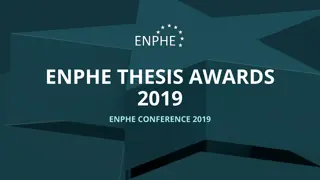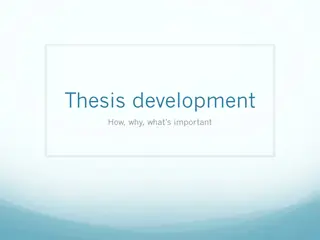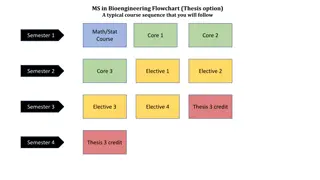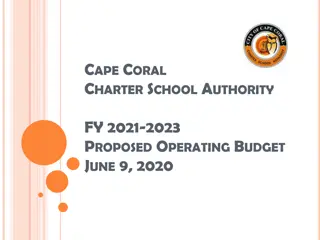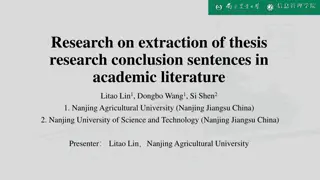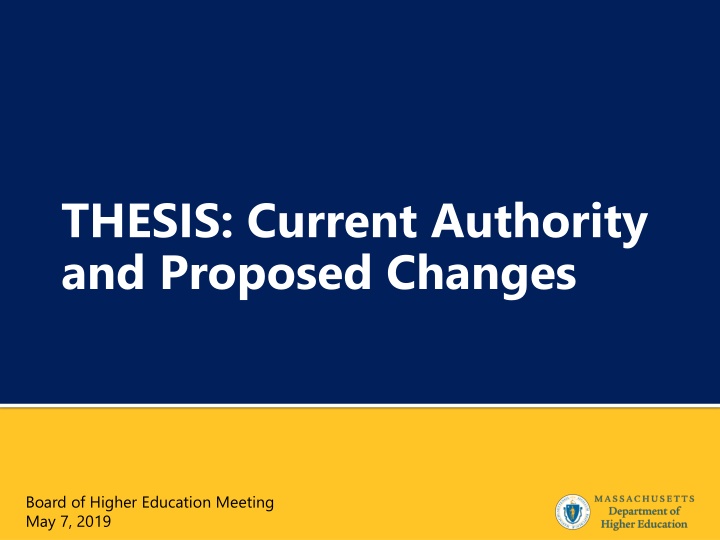
Authority and Changes in Higher Education Governance
Explore the challenges and opportunities facing the Board of Higher Education regarding closures and mergers of institutions in Massachusetts. Discover the current regulatory authority and proposed changes, including triggers for investigations, financial stability monitoring, and more.
Uploaded on | 1 Views
Download Presentation

Please find below an Image/Link to download the presentation.
The content on the website is provided AS IS for your information and personal use only. It may not be sold, licensed, or shared on other websites without obtaining consent from the author. If you encounter any issues during the download, it is possible that the publisher has removed the file from their server.
You are allowed to download the files provided on this website for personal or commercial use, subject to the condition that they are used lawfully. All files are the property of their respective owners.
The content on the website is provided AS IS for your information and personal use only. It may not be sold, licensed, or shared on other websites without obtaining consent from the author.
E N D
Presentation Transcript
THESIS: Current Authority and Proposed Changes Board of Higher Education Meeting May 7, 2019
Closures and Mergers: Massachusetts Context In MA: 18 closures/mergers over past 5 years 8 completed institutional closures Sanford Brown College; Marian Court College; Le Cordon Bleu; ITT Technical Institutes; New England Institute of Art; University of Phoenix; Atlantic Union College; and Mount Ida College 7 completed closures due to mergers School of the Museum of Fine Arts; New England College of Acupuncture; Boston Conservatory; Episcopal Divinity School; Andover Newton Theological Seminary; National Graduate School of Quality Management; and Wheelock College 3 pending institutional closures Newbury College; Northern Vermont University; and Salter College 2
Current BHE Authority Regulatory Degree Granting Authority- Post-1943 institutions Any entity organized after 1943 that seeks to operate in MA and offers degrees/ courses leading to degree must be authorized by the BHE Standards are requirements set in 610 CMR 2.00 State Financial Aid ($120m annually) Voluntary participation 65 private IHEs, including 20 of 21 pre-1943s, participate Standards and requirements set forth in OSFA Participation agreement- including audit and renewal requirements 3
Current BHE Regulatory Authority Regulatory Triggers for Investigation Institution notifies BHE it may close, or plans to either merge with or acquire an existing institution. Plan satisfactory. Institution implements the plan under BHE scrutiny. If BHE has reason to believe an institution is not compliant with BHE regulations, BHE conducts a preliminary preliminary inquiry inquiry. If compliance issues are confirmed, BHE reviews allegations reviews allegations of non-compliance with the institution and requests a corrective course of corrective course of action plan action plan. BHE investigates investigates reactively, when facts are brought to the attention of BHE alleging non- compliance with BHE regulations. BHE is alerted of facts concerning potential regulatory violations that may result in significant detriment to students, e.g. abrupt changes in governance structure, fiscal affairs, or academic quality. Plan unsatisfactory. BHE pursues revocation or suspension. BHE refers matter to AGO. 4
Challenges and Opportunities Current Challenges Only applies to 77 out of 98 IHEs Proposed Enhancements Include all IHEs participating in State Financial aid programs in screening and monitoring Reactive: facts brought to our attention No affirmative obligation for annual screening Proactive: requires BHE to conduct annual screenings using multiple metrics on publicly available data Past, present, and future financial stability No established metrics No threshold standard Defining within context of past, present, and future financial stability, whether and how institutional financial issues are screened for monitoring and action (e.g., 18 month rule, multiple measures) Notice to students and contingency closing plans Not mandatory, may be requested Notice to students and contingency closing plans required based on regulatory threshold Confidentiality Currently use investigatory & deliberative process exemptions Confidentiality - statutory exemption 5
BHE Regulatory Authority THESIS Recommendations Regulatory Triggers for Investigation Plan satisfactory. Institution implements the plan under BHE scrutiny. New Active Monitoring Phase Institution notifies BHE it may close, or plans to either merge with or acquire an existing institution. Annual Screening (Proactive) Adds regulatory threshold requirement for notice notice to students and a contingency contingency closure plan closure plan, e.g. 18-month rule during the active monitoring phase If compliance issues are confirmed, BHE reviews allegations of non-compliance with the institution and requests a a corrective course corrective course of action plan of action plan. If BHE has reason to believe an institution is not compliant with BHE Regulations, BHE conducts a preliminary preliminary inquiry inquiry. BHE investigates investigates reactively, when facts are brought to the attention of BHE alleging non- compliance with BHE Regulations. BHE identifies concerns regarding an institution s past, present, or future financial stability, and the resources available for effective accomplishment of its announced purposes. and a Plan Unsatisfactory. BHE is alerted to other potential regulatory violations that may result in significant detriment to students, e.g., abrupt changes in governance structure, fiscal affairs, or academic quality. BHE refers matter to AGO. BHE pursues BHE revocation or suspension. Sanctions 6
Elements of a Teach Out Plan Ensure student records are retained Review existing articulation agreements or create new institutional pathways (by majors) to ensure transfer of students with little to no loss of credits. Create exigency transfer agreements to facilitate seamless completion of a degree (e.g., waive residency requirements) Review and provide feedback on institutional communication to stakeholders Help institutions to create reverse transfer arrangements Provide transitional teams even after closure Facilitate recruitment and admissions fairs for affected students Facilitate approval of temporary teach out arrangements 7
Guiding Principles for Implementation of THESIS Recommendations Balanced approach-consumer protection and institutional integrity Shift from being reactive to proactive One size does not fit all Exploring multiple measures/indicators/trends Be deliberative and inclusive; solicit input from multiple stakeholders Ensuring confidentiality protections is key Requiring timely notification to students is also key 8
Timeline April 2018- Mount Ida College announces abrupt closure June 2018- BHE forms THESIS working group Summer and Fall 2018- THESIS group meets, conducts research and analysis, develops recommendations January 22, 2019- BHE accepts THESIS Working Group report and charges Commissioner to develop implementation recommendations January-June 2019- Informal stakeholder vetting; regulation drafting May-June 2019- Finalize a draft set of regulations; distribute draft regulations for further informal vetting June 18, 2019- BHE votes to put draft regulations out for formal public comment June-August 2019- Pubic Comment period; DHE staff revise regulations as needed; finalize policies Fall 2019 BHE Meeting- Vote on final regulations (Date of meeting TBD) 9

